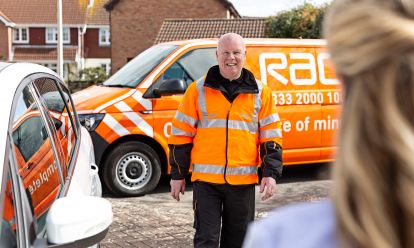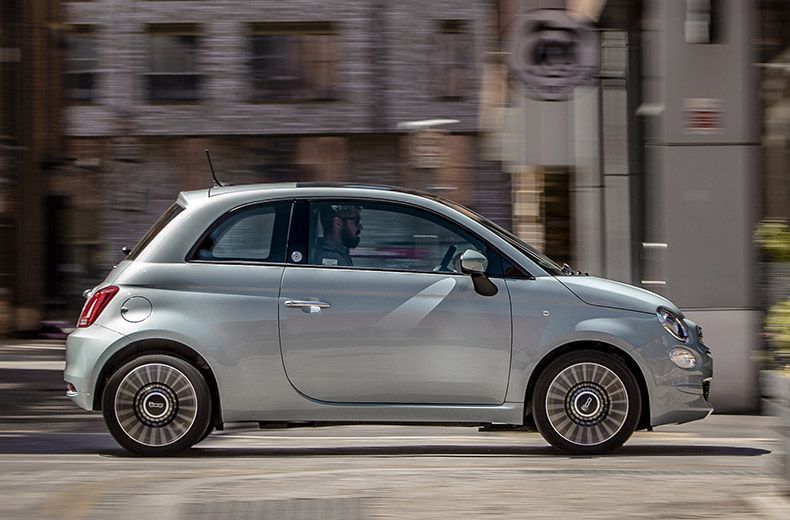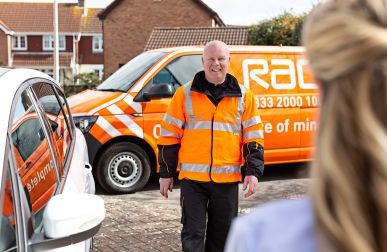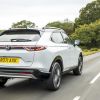Hybrid cars – or Hybrid Electric Vehicles (HEVs) – combine either a petrol or diesel combustion engine with an electric motor.
The combustion engine charges the car’s batteries, while the electric motor adds more power if needed – when accelerating, for example. This system helps make cars more efficient and reduces their emissions.
An HEV is a great stepping stone for drivers who want to drive a greener car, but still want a combustion engine in reserve for longer journeys.
There are already plenty of these models on the market and new HEVs are being launched all the time. Here, we look at some of the best cars available.
Best small HEVs
Fiat 500 Hybrid
Mild hybrids (MHEVs) like the 500 have a very small hybrid system that uses recovered kinetic energy to power an electric motor, which then assists the combustion engine. The Fiat thus mixes HEV tech with city car style.
Its three-cylinder 1.0-litre 70PS engine has a 12-volt belt-integrated starter generator (BSG) electric motor. Just like a full self-charging HEV, there is also a lithium-ion battery – albeit a smaller one.
Unlike HEVs and PHEVs, though, MHEVs can’t run solely on electric power. However, the mild-hybrid system in the 500 does aid both fuel economy and emissions.
The Fiat can return 53.3mpg, with emissions starting from 105g/km. As well as the regular 500 hatchback, the 500C convertible and Fiat Panda models are also offered with MHEV technology.
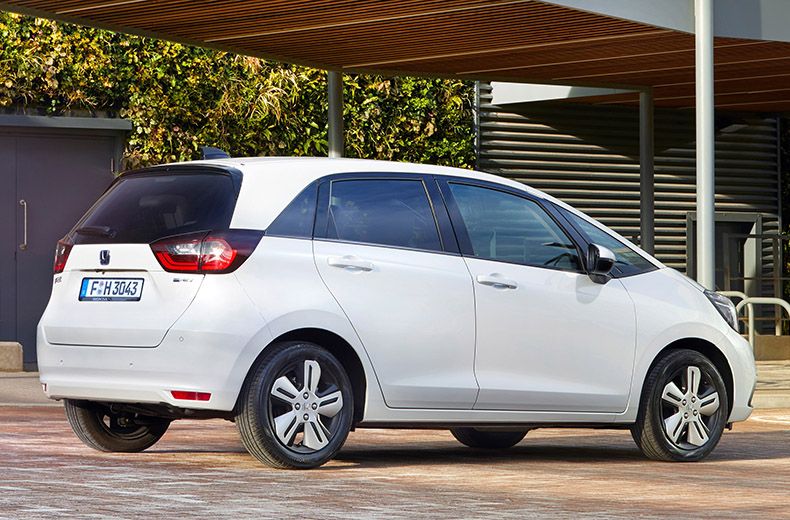
Honda Jazz e:HEV
Honda has an HEV heritage. The company released the Insight hybrid in 1999 and is now revisiting petrol-electric cars once again.
Similar to the Toyota Yaris, the Honda Jazz e:HEV is one of the very few small cars only available as an HEV.
It uses the same i-MMD full-hybrid system as Honda’s larger CR-V and HR-V SUVs. The Jazz’s 1.5-litre engine is mated to a 109PS electric motor, its ‘EV Drive’ mode allowing the supermini to run purely on electric power for short distances.
Official economy is 62.8mpg, with CO2 emissions of 102g/km. In addition to the regular model, the SUV-styled Jazz Crosstar offers 110g/km CO2 emissions and 58.9mpg economy.
Read our Honda Jazz e:HEV review.
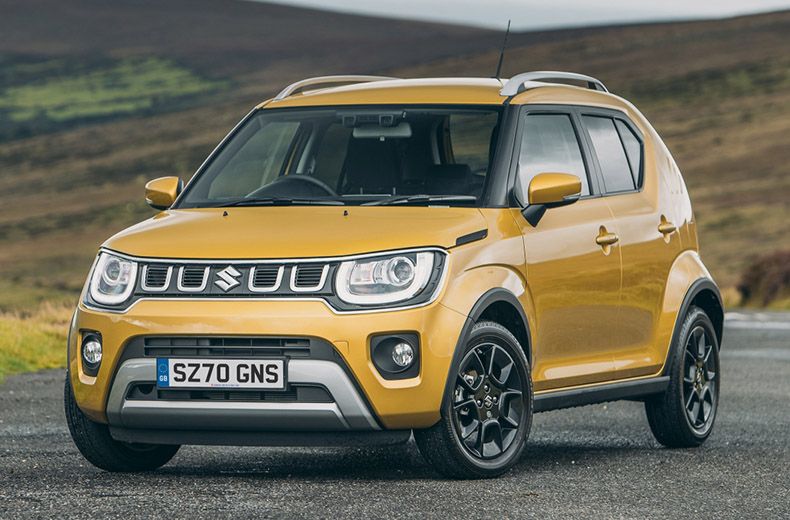
Suzuki Ignis Hybrid
To keep their prices down, small cars tend to have mild-hybrid technology rather than a full-blown self-charging system. So, like the Fiat 500, Suzuki’s Ignis Hybrid is actually an MHEV.
Styled like a little crossover, the Ignis has cute looks, but is really a city car with a bit more rough-and-tumble attitude. It’s certainly distinctive.
The Ignis Hybrid’s 1.2-litre ‘Dualjet’ engine makes 83PS and is connected to an integrated starter generator (ISG) – a very small electric motor – along with a tiny lithium-ion battery for efficient energy recovery.
Emissions start from 110g/km, and the Ignis Hybrid has off-road ability to match its looks. Suzuki’s optional Allgrip Auto permanent four-wheel drive provides extra traction for crossing rough and slippery surfaces.
Read our Suzuki Ignis Hybrid review.
Best small family HEVs

Hyundai Ioniq Hybrid
South Korean company Hyundai began its green car push in 2016 with the Ioniq, and it didn’t hedge its bets – releasing the family-friendly car in self-charging hybrid (HEV), plug-in hybrid (PHEV) and all-electric flavours.
The Ioniq HEV’s 1.6-litre petrol engine, 41PS electric motor and 1.56kWh lithium-ion battery work together for a system output of 141PS.
Refreshingly different to the SUVs that flood the family car market, the Ioniq mixes HEV technology with a sleeker fastback style.
Excellent aerodynamics play their part in the Ioniq Hybrid’s efficiency. Emissions start from 102g/km, while fuel economy is a quoted 62.8mpg.
Read our Hyundai Ioniq Hybrid review.

Toyota Corolla Hybrid
As with the Yaris, Toyota has made the decision to sell the latest Corolla hatchback with an all-hybrid engine range. Unlike the Yaris, though, a choice of two petrol engines is available.
Borrowing technology from the Prius, the 122PS 1.8-litre petrol engine sits alongside a 72PS electric motor and 0.8kWh lithium-ion battery.
A larger 109PS electric motor and 1.4kWh battery offer more sprightly performance when the Corolla Hybrid is fitted with the more powerful 184PS 2.0-litre engine.
Fuel economy ranges from 53.3mpg to 62.7mpg, and emissions start at 102g/km. The Corolla is also unique in its class for being available in three body styles: five-door hatchback, five-door Touring Sports estate, and four-door saloon.
Read our Toyota Corolla hatchback review.
Electric car news
Stay up to date on all the latest and upcoming developments in the EV world.
Best small HEV SUVs
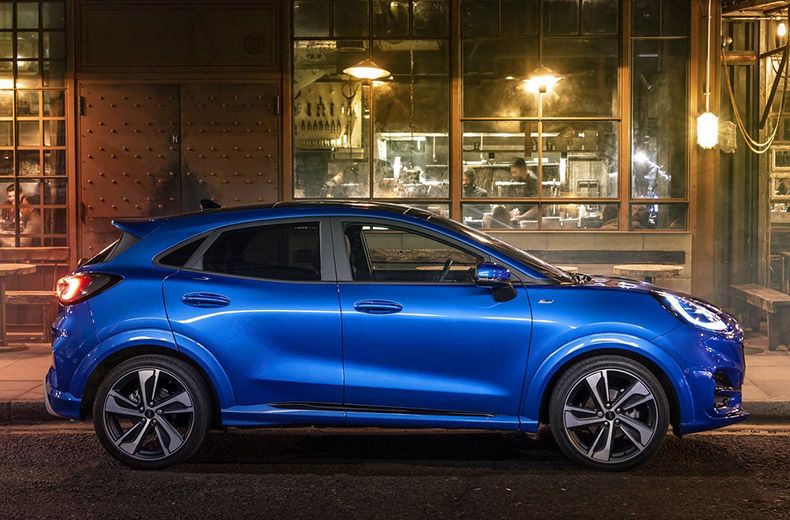
Ford Puma EcoBoost Hybrid
Along with the popular Fiesta supermini, Ford’s Puma small and stylish SUV comes with mild self-charging hybrid technology.
The 1.0-litre EcoBoost hybrid petrol engine serves up 125PS or 155PS, and uses a BSG to recover the energy usually lost during braking and coasting. This then charges its on-board battery pack.
The BSG also uses the stored energy to provide extra power – equivalent to 16PS – during acceleration. CO2 emissions start at 122g/km, with economy from 52.3mpg.
Depending on your preference, there is a choice of six-speed manual and seven-speed automatic gearboxes, as well as a wide choice of trims, including sporty ST-Line X and plush Vignale.
Read our Ford Puma review.
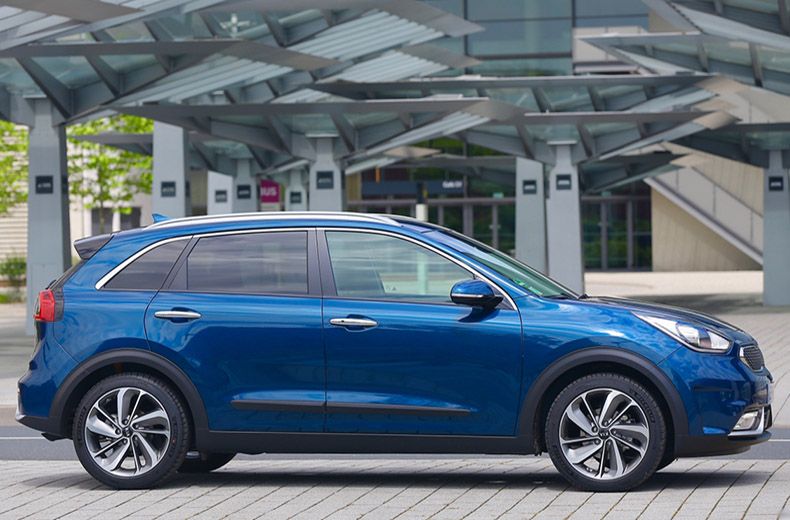
Kia Niro Hybrid
The Niro – in particular the all-electric e-Niro – is one of Kia’s most popular cars. It’s related to the Hyundai Ioniq, and like that car there are self-charging and plug-in hybrid options, plus an all-electric model.
Unlike the Hyundai, the Niro is more of a crossover in style. That makes it a practical car for families. There’s lots of room in the cabin and the boot is a decent size, too.
Being related to the Ioniq, the Niro HEV uses the same 1.6-litre petrol engine, electric motor, and battery. So, it’s unsurprising it has very similar emissions and economy figures.
In official tests, the Niro Hybrid is capable of 58.9mpg, and it has CO2 emissions starting from 110g/km.
Read our Kia Niro Hybrid review.
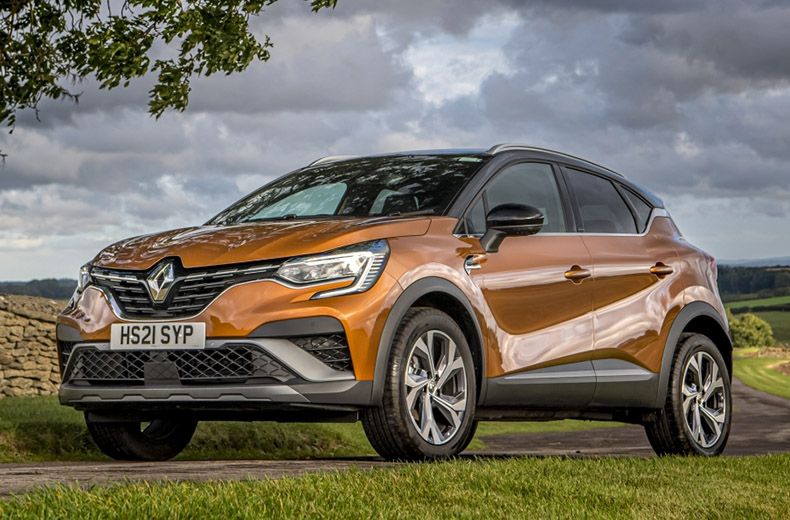
Renault Captur E-Tech Hybrid
Renault has forged a path with electric vehicles over the past few years, and its ZOE BEV (Battery Electric Vehicle) has proved very popular.
Hybrid technology now features strongly in its range, and the 145PS Captur E-Tech Hybrid uses a 1.6-litre petrol engine, plus a pair of electric motors and a 1.2kWh battery. The smaller Clio also employs the same tech.
Along with other self-charging hybrids, the Captur HEV switches between electric, hybrid and petrol modes. A separate ‘B Mode’ significantly increases regenerative braking to slow the car down and charge the battery.
The Captur E-Tech Hybrid’s HEV technology helps save fuel and reduce emissions. It produces just 113g/km of CO2 and returns fuel economy up to 56.5mpg.
Read our Renault Captur E-Tech Hybrid review.
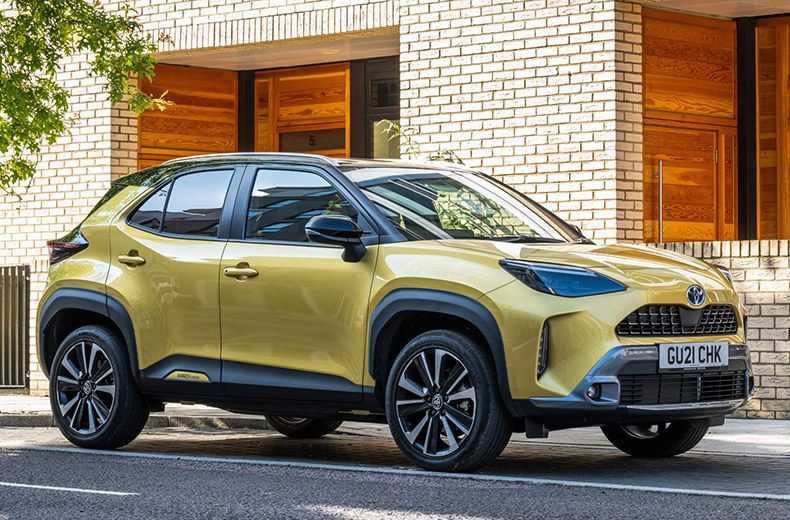
Toyota Yaris Cross Hybrid
A leader in hybrid technology, Toyota is one of the major players in the HEV market. It first sold hybrid cars back in the late 1990s and early 2000s when it launched the original Prius.
Apart from the GR hot hatch version, the latest Yaris supermini is only available as an HEV. Its hybrid drivetrain can also be found in the newest member of the family, the Yaris Cross SUV.
Alongside the three-cylinder 1.5-litre petrol engine is an 80PS electric motor and a 0.8kWh lithium-ion battery. The system gives the Yaris Cross hybrid 116PS in total, plus CO2 emissions between 100g/km and 117g/km.
Both front- and four-wheel-drive versions of the stylish newcomer are available. Official fuel economy is 57.6-68.8mpg for the front-driven car, dipping slightly to 55.2-55.4mpg for the 4WD version.
Read our Toyota Yaris Cross Hybrid review.
- How to save fuel – the ultimate guide
- Car tax bands – a simple guide to car tax
- RAC launches all-electric patrol van
Best small sporty HEVs

Suzuki Swift Sport Hybrid
The words ‘Sport’ and ‘Hybrid’ don’t usually go together, so how has Suzuki managed to combine them in a more performance-orientated car?
The Swift Sport Hybrid is another MHEV, and shares the same tech that features on the Ignis. However, its 48V mild-hybrid system is more powerful than that of its smaller sibling.
Coupled to its turbocharged 1.4-litre ‘Boosterjet’ petrol engine is a 13PS electric motor and small lithium-ion battery. Total output is 129PS, so the Swift is ‘warm’ rather than truly hot. However, it’s still capable of achieving up to 50.4mpg and dashing to 62mph in 9.1 seconds.
The Swift Sport’s hybrid powertrain has special control and boost systems to make acceleration smoother by adding torque – there’s a total of 235Nm available from the electric motor and engine during acceleration.
Read our Suzuki Swift Sport Hybrid review.
- 2030 ban – is it worth buying an electric car now?
- Government dismisses calls for fairer pricing at EV chargepoints
The RAC is leading the way when it comes to supporting drivers in the switch to electric vehicles.
An ever-increasing number of our patrol vans have built-in emergency mobile charging systems capable of giving an out-of-charge electric car enough power to be driven a short distance home or to a working charge point. Our All-Wheels-Up recovery system also allows our patrols to safely rescue electric cars with no need for a flatbed.
Find out more about the RAC’s electric car breakdown cover.
RAC Breakdown Cover
Join the RAC and get breakdown cover. Our patrols fix 4 out of 5 vehicles on the spot, with repairs done in just 30 minutes on average.
